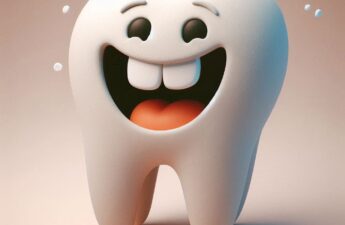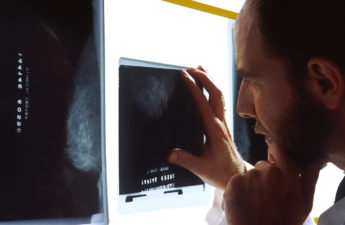Category: Prevention
Daily physical activity, even at light intensities, linked to lower cancer risk
NIH study finds number of steps taken daily may be more important for cancer risk than the intensity of activity.
Going to the dentist is expensive. Here are 3 things you can do to protect your oral health – and 3 things to avoid
Most oral and dental diseases are preventable, if you take care of your teeth and mouth. In-between visits to the dentist, here’s what you can do to avoid preventable issues – and blow-out dental costs.
How to assess your risk for breast cancer
One in eight American women will develop breast cancer in their lifetime. A combination of factors can influence your risk.
Some are unmodifiable, such as age, having dense breasts and a family history of breast or ovarian cancer, while others are modifiable, such as physical activity levels, weight and reproductive history.
3 statistical stuff-ups that made everyday items look healthier (or riskier) than they really are
When statistical mistakes are made and found, it can have profound impacts on people who may have changed their lifestyle as a result of the flawed study.
Stay safe in freezing temperatures with these winter weather tips
The National Weather Service has issued a cold weather advisory through Wednesday. Most of the state will experience dangerously low temperatures that can lead to hypothermia, frostbite, and other health issues. These risks are especially high for people working outdoors, those without shelter or adequate heating, the elderly, and pets.
Wood burning produces a complex chemical mixture of fine particulate matter (PM2.5) and gases, which can be breathed deep into the lungs. The specific contents vary based on the type of stove and the type of fuel, but chemicals can include carbon monoxide, oxides of nitrogen and a range of volatile organic compounds, such as cancer-causing formaldehyde and benzene.
E-bike popularity is booming. But are they as safe as regular bikes?
E-bike users are more likely to sustain injuries to their spine and lower extremities (hips, legs, ankles and feet) compared to regular cyclists.
When injured, they are more likely to be admitted to hospital wards or intensive care units, where they also have a higher chance of undergoing surgery – and of dying.
Why seeing the same doctor could save your life
A review examining 1.4 million patients worldwide found that those who do not see the same doctor regularly are more likely to die within a certain period. This consistent relationship with a doctor is known as “continuity of care”.
Many of the benefits of this approach probably stem from the fact that doctors accumulate knowledge about an individual patient, which they then use in subsequent consultations to tailor advice.
New year, new norovirus outbreaks: Let’s add ‘hand washing’ to the resolution list!
Norovirus, a highly contagious virus causing vomiting and diarrhea, is prevalent during the winter months. Symptoms typically last 1-3 days and include nausea, vomiting, stomach cramps, and diarrhea. Prevention involves frequent handwashing, especially after contact with an infected person or contaminated surfaces, and proper cleaning and disinfection of affected areas.
Five ways to cut your risk of cancer – by an oncologist
By adopting healthy lifestyle choices, you’re not only reducing your cancer risk but also improving your overall health and wellbeing, and you’ll probably be happier with your new self too. It’s never too late to start making positive changes that can have a lasting impact on your health.
Junk food and drug use cut into life expectancy gains for states
Bad habits such as junk food, smoking and illicit drug use are preventing longer lifespans even as technology brings major progress in diseases such as cancer and heart disease, according to a new study by the Institute for Health Metrics and Evaluation at the University of Washington.
Nine of the 10 states (all but North Dakota) with the longest life expectancies for babies born this year are dominated by Democrats, and all 10 have expanded Medicaid under the Affordable Care Act. All 10 states with the shortest life expectancies are controlled by Republicans (though Kentucky has a Democratic governor), and they include five of the 10 states that have not expanded Medicaid.
Why do disinfectants only kill 99.9% of germs? Here’s the science
Have you ever wondered why most disinfectants indicate they kill 99.9% or 99.99% of germs, but never promise to wipe out all of them?
From 1975 to 2020, prevention, screening and care have averted 4.75m deaths in the U.S., study
From 1975 to 2020, prevention and screening efforts averted 4.75 million deaths from five cancer types: breast, cervical colorectal, lung prostate. NCI
Healthspan versus lifespan: The vital role of muscle in successful aging
The extension of life expectancy in the 20th century and beyond is one of humanity’s greatest achievements. However, it is crucial to draw a distinction between lifespan — the amount of time between birth and death — and healthspan, which is the amount of time during which a person is healthy within their lifespan. Older people are spending more time in poor health, and this represents a major individual and public health burden.
Many people don’t measure their blood pressure properly at home – here’s how to get accurate readings
Measuring your blood pressure at home means you can take readings over several days to get a better picture of your health, instead of one-off measurements at the doctor’s clinic. But it’s important you follow specific steps to get an accurate reading.













